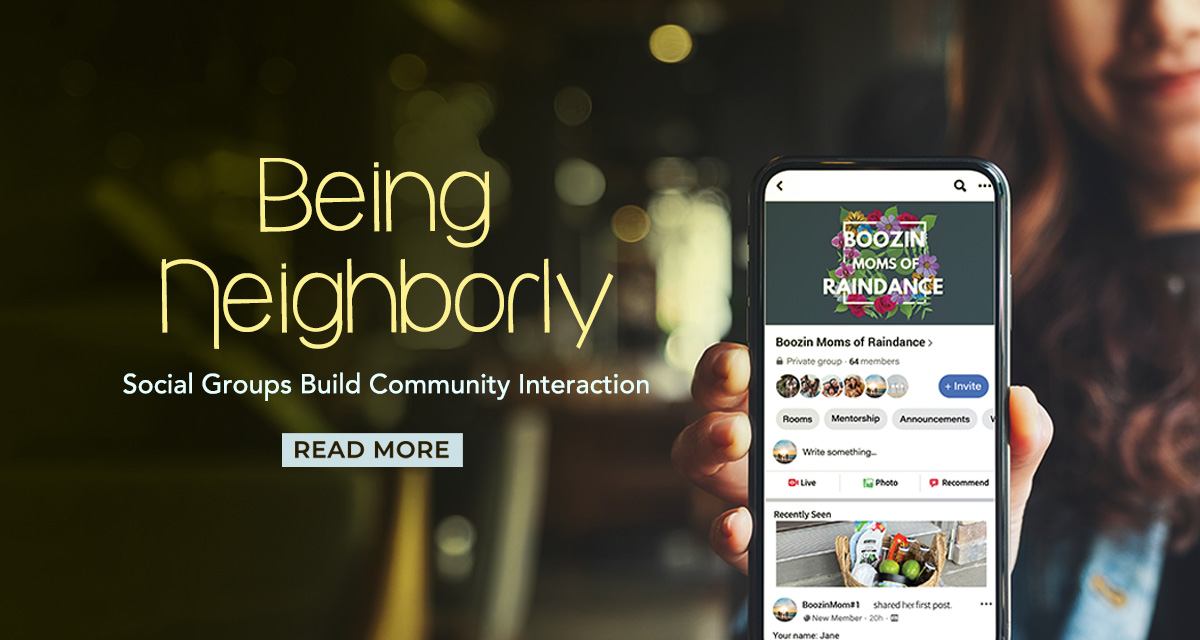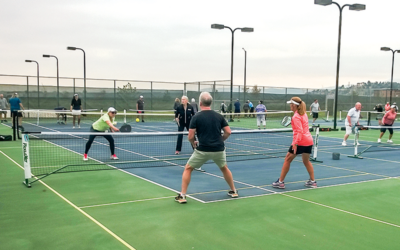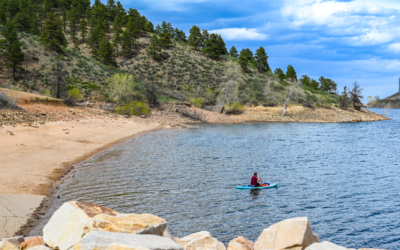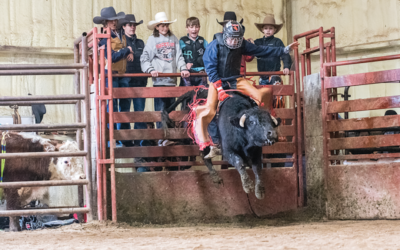– Photos by Jordan Secher –
If it wasn’t for the Boozing Moms or a group for swingers, the Raindance subdivision in Windsor would seem like a neighborhood fit for a black-and-white TV show.
Rishelle Rosario-Cruz and her husband, Carlos, moved there in March 2021 because they loved that there were a lot of kids and a pool. Carlos is a truck driver, and Rishelle is a stay-at-home mother to seven kids, ages five months to 15 years. Anything that would get some of those kids out of the house and make it a fair fight seemed ideal.
But they were pleasantly surprised to find there’s plenty of activities for adults too. They have game nights, parties and activities planned by a director who also handles Water Valley get-togethers, the older sister of Raindance. Neighbors sell goods, including apple cider donuts, to each other. Even the Boozing Moms of Raindance group has enough wholesomeness in it to maybe make an edgier reboot of “Leave it to Beaver.”
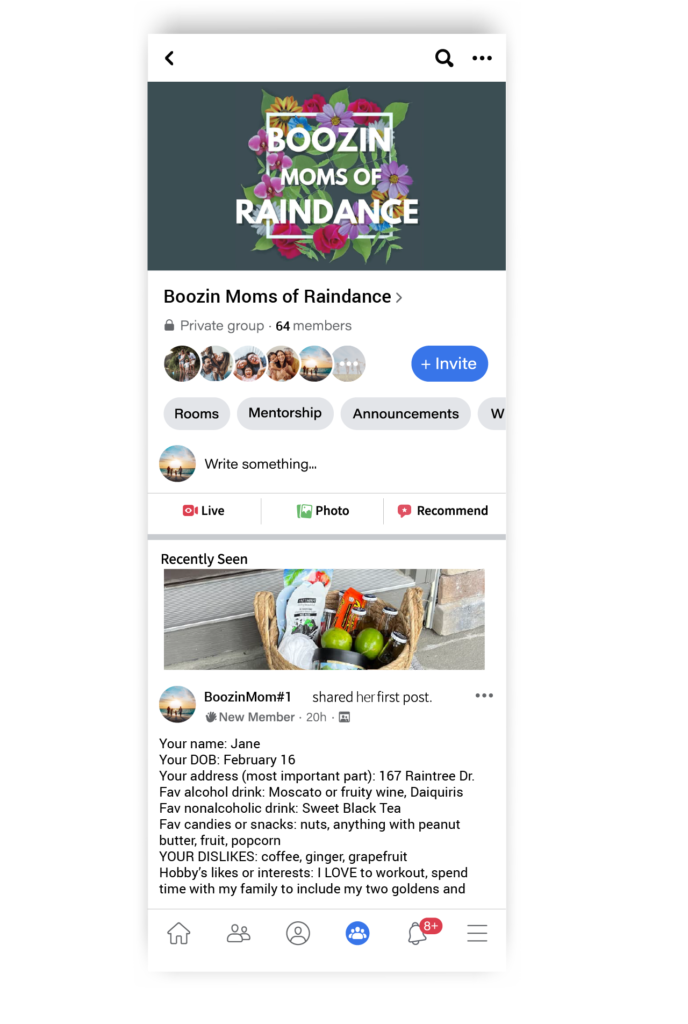
Members of the group, one of literally dozens on Facebook for Raindance neighbors, give a basket of goodies and receive one in turn, usually spruced with holiday themes and gifts (such as the paint supplies Rosario-Cruz, an artist, got once), along with their favorite kinds of alcohol, helpfully listed in the Facebook group. The mothers got together for coffee and playdates but started Boozing Moms after COVID-19 wiped all those sanity-saving social activities off the board.
“No one was allowed out,” Rosario-Cruz says. “So, you basically were there to give some hope.”
Raindance and Water Valley are good examples of neighborhoods with residents connected to each other, the kind of esthetic played out in both genuine classic sitcoms and parodies such as “Edward Scissorhands,” “The Burbs” or “The Stepford Wives.” There are many good examples of these neighborhoods in Northern Colorado, but not as many as city leaders in Greeley and Fort Collins would like.
City governments love strong neighborhoods for many reasons and have whole offices dedicated to that goal, even after COVID-19 dented a lot of the effort. Sometimes those efforts pay off, as neighbors not only socialize but apply for city grants for small projects to add character and beauty to their communities, notify the city when something goes wrong and talk to city leaders about ways to improve whole sections of town.
Many times, those suggestions aren’t things city leaders thought about but can, over time, change a neighborhood’s dynamic and increase the kind of civic pride that encourages residents to apply for boards, volunteer or even run for city office.
“Strong neighborhoods lead to better public participation,” says JC Ward, a senior planner in Fort Collins’ Neighborhood Services office, “and better resources for their area as a result.”
But getting to that point is difficult. Most neighbors must be prodded to participate, talk to each other or just get out of their house. Out of the nearly 200 neighborhoods in Fort Collins, the city gets participation from just 50, Ward says.
The Raindance neighbors help others, like the Thanksgiving meal they delivered to a woman who couldn’t afford one. Rosario-Cruz doesn’t judge groups such as the Party Animals of Raindance or the swingers: She likes that there’s something for everyone.
“Not my forte but whatever,” she says of the swinging group and laughs. “I’m not sure why Raindance is like that, but everyone here is really good with each other. We come together when we need it.”
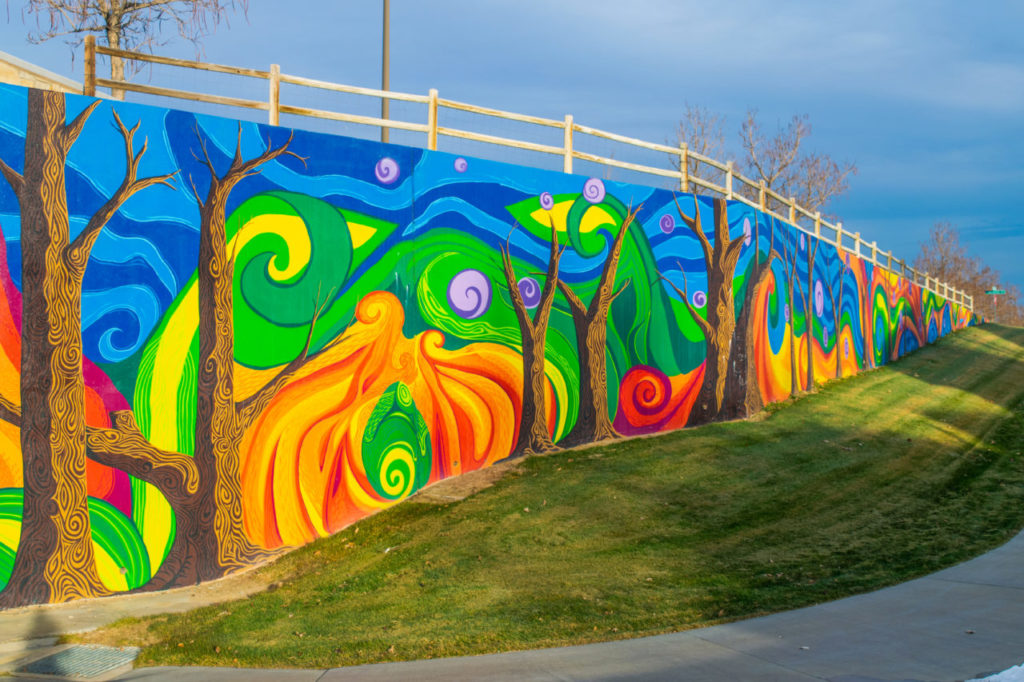
Above: “Vibrant Forest,” a 190-foot mural painted by local artist, Kristen Vohs, for the City of Fort Collins. Nick Armstrong (right) spearheaded the project along with many other projects to improve the community.
Building a community, not just a subdivision
Raindance reminds Michelle Leschinksky of Water Valley when she first moved there 23 years ago, though she can’t recall a group for boozing moms or, ahem, anything else. She loved the way neighbors interacted with one another: It reminded her of growing up in Grand Island, Neb., a smaller town where people took care of each other.
“I wanted to get out of busy Fort Collins and have a simpler life,” she says.
She is now a retired police officer and started a new job a year ago as lifestyle community coordinator for both Raindance and Water Valley. She credits a lot of the closeness to Developer Martin Lind, who hired her and has opened amenities such as a marina even after his community is mostly built out, at least in Water Valley.
“It’s the way he grew up,” Leschinksky says. “His mission is to bring together families and communities, and he puts his heart into what his mission is.”
As a part of that mission, Leschinksky plans a dozen events a year, some for both subdivisions and some for one or the other. She hosts cookouts featuring big game bagged by residents, chili cook-offs with a grill as the prize for the winner and Hawaiian luaus. She also takes requests, like getting together a bingo night, and turns some events into fundraisers, including a recent one that raised $10,000 for the Windsor Charter Academy.
Those events are fun but serve a greater purpose: They bring neighbors together.
“Every event I would hold, there were more and more residents who would open up,” Leschinksky says. “They would say, ‘We want to help with the next one.’”
Now all she has to do is get an event off the ground and the neighbors will take over, she says. During the big game BBQ, residents showed up in camo, even their kids, and one served his dish with arrows in it.
“I just thought we’d have a cook-off,” she says. “No. They went big. It was just hilarious.”
The residents in Water Valley are older now, but she remembers some wilder times, including some bull riding on the beach (with real bulls, she claims, without elaboration on how they pulled that off). The younger crowd in Raindance may be different, but both neighborhoods reflect the closeness that Lind wanted to build. Water Valley neighbors still take trips together, including one trip to Nashville she heard about with eight different families.
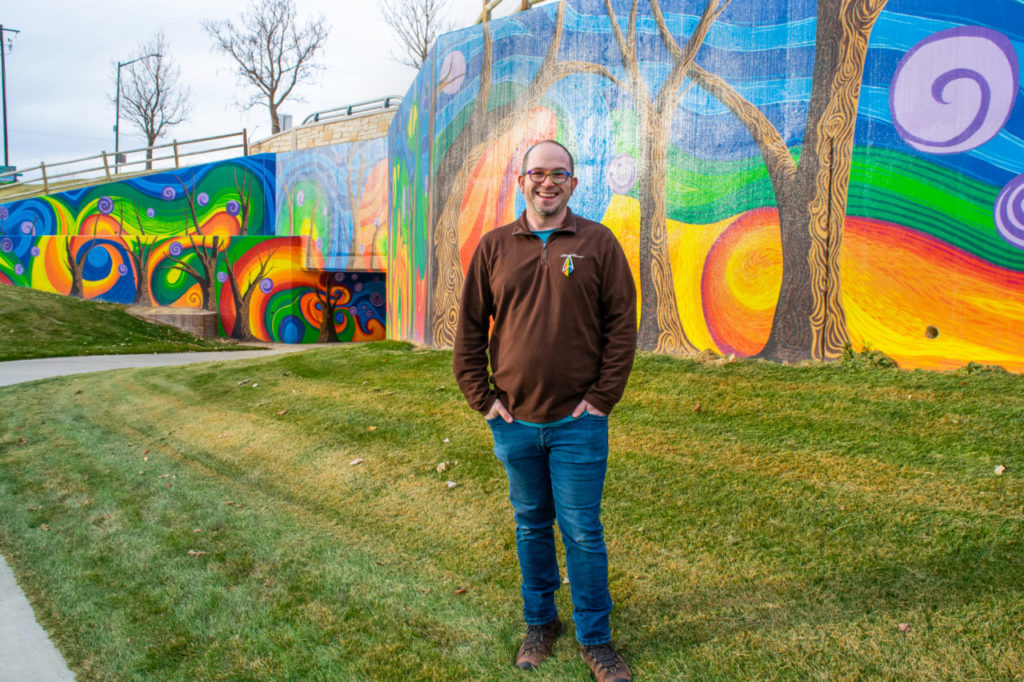
Nick Armstrong
“When I walk around, I see a lot of people off their technology and engaging. It’s like Mayberry on a weekday,” she says of the classic “Andy Griffith” show. “We all like living here because it’s never going to get stale. There’s always something up and coming. People look forward to that.”
Most subdivisions won’t have a paid staff member to organize events, but some may have a budget for a party, especially a metro district or a more organized community, such as those with an HOA. Nichole Hill led the Windshire neighborhood’s organized events community for eight years and worked with a budget provided by the metro district.
“It was really hard in the beginning,” Hill says, “but after the first couple of years, it became a well-oiled machine, even with just a few people putting them on.”
Hill and her small committee planned the usual fare of Halloween events, chili cook-offs and the biggest event of the year, National Night Out, a nationwide event many neighbors celebrate to promote relationships between first responders and residents. The events didn’t have to be fancy or all that original as long as they served food, she says.
“That was a huge driver,” Hill says and laughs. “It really was merely just providing an activity or reason to get people out of their houses and one that sounded appealing to everyone.”
Just as they were for Rosario-Cruz, kids are always a good reason for neighbors to mingle with each other while their brood burns off energy.
“[Parents] are in charge of providing these magic moments,” Hill says, “and if someone else is willing to do that for you, that’s very alluring.”
No bad areas
Becky Safarik has carried a mantra with her while working as a longtime planner for the City of Greeley: There shouldn’t be a bad part of town.
That’s not the only driver of the city’s efforts to build good neighborhoods: The “good” ones get a lot of attention as well, especially if they have active residents. But it’s a big reason why the city has a neighborhood building blocks team full of workers from all departments that meets twice a month to discuss policies and problem areas.
One example would be Hillside, an older neighborhood with tons of character, which had a tunnel underpass that attracted what Safarik politically referred to as “nuisance activity” (aka homeless people using it as shelter, kids drinking or doing drugs, or other fun stuff), and the committee met about it to discuss options such as closing it for a time. The committe helps resolve issues and gets neighbors an answer right away.
“That way you don’t have to bounce around from one department to another,” says Safarik, who retired as assistant city manager before returning as interim community development director, a title she held for decades.
The city also doles out improvement grants as high as $20,000 or so for neighbors to suggest things such as sprucing up landscaping and an entryway, playground equipment or patching a sidewalk. Glenmere, a well-established neighborhood, recently used a grant to purchase aesthetically pleasing trash cans and stations to encourage residents to pick up after their pets at the park in the center of the neighborhood. The grants help residents feel empowered but also encourages them to work together and stay connected.
Safarik calls neighborhoods “near and dear to my heart,” so much so that she gives out decks of playing cards that list 52 ways to love your neighbor.
“Healthy neighborhoods mean a healthy community,” Safarik says, “and we have so many different ones. When you talk to residents, they will identify as their city but also will often say they’re from their neighborhood as well.”
Fort Collins’ neighborhood program teaches residents how to get their neighborhoods to become close-knit communities and works to set up neighborhood associations that don’t have HOAs, including apartment complexes and mobile home parks, to help residents settle tough issues.
This is part of an effort to reach out to neighborhoods with lower incomes.
“We know there are certain neighborhoods that are underserved,” Ward says. “These tend to have less participation. But we are trying to reach them.”
Residents who feel comfortable contacting the city over issues can be crucial to ensuring neighbors don’t become the Hatfields and the McCoys. Plus, it’s nearly impossible for the city to know every neighborhood intimately, and residents can help bridge those gaps.
“We don’t have a lot of presence in those farther flung places,” Ward says of Fort Collins, “and we have a lot of resources and fun stuff people can do. We love to have people have events and really get into it. We just want to know how we can help.”
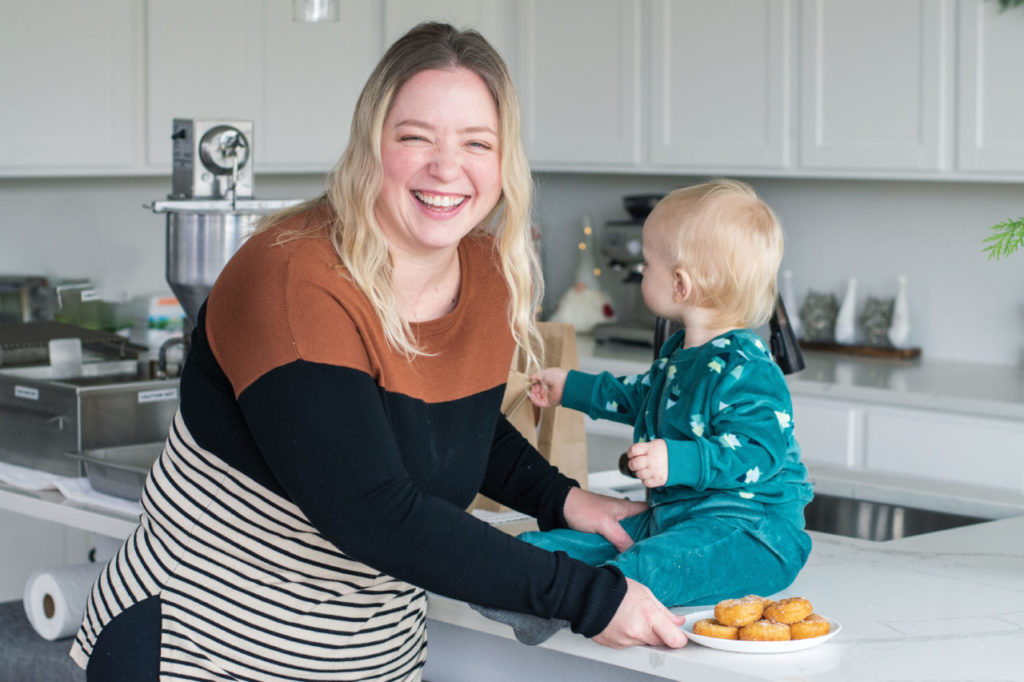
Jennifer Goral, co-owner of Rocky Mountain Donuts, making apple cider donuts with her son, Henry.
Hooked
More than a few homeowners would call HOAs a PIA. But Nick Armstrong would call them a gateway drug.
He and Stacy, his new bride, bought a home in the new Fort Collins subdivision Maple Hill in 2009, but they didn’t do it for the community. They were thrilled to get a home for $190,000. They could grow into it: The basement was unfinished, and there was enough room for kids.
Armstrong agreed to join the HOA because his friend became the president. Then he heard about the Little Free Library movement, a small place where neighbors could borrow books. He bought one for $150, and a carpenter finished it and put it up. He saw kids waiting at the bus stop reading the books.
“From there I was kinda hooked,” Armstrong says and laughs.
When a church disbanded, he and others applied for a small city grant to buy plastic eggs, the goodies to stuff them and a bunny costume. They filled 4,000 eggs that year. When COVID-19 hit, another city grant paid for more than 200 Halloween bags full of tiny comic books, candy and popcorn to drop on children’s porches, and they paid musicians to host a series of concerts on YouTube.
He helped put together Movement in Maple Hill, a number of fitness classes such as kettlebell and walking. Another $20,000 grant upgraded the neighborhood’s sprinkler system and converted an area to natural grass, enough to save seven million gallons of water a year (and meet the needs of the 600+ homes for three months). Yet another grant paid for artists to paint all the utility boxes and draw a 190-foot mural, the longest in Fort Collins, on an underpass that was repeatedly tagged with graffiti. He later became president of the HOA.
“These are things that are totally doable by anyone,” Armstrong says. “All it takes is some passionate people to lead the way.”
Armstrong loves to point these out as examples and ideas for others, but to be fair, we should point out Armstrong eventually ran for city council in 2019, where he lost to an opponent he respects by 33 votes. He may run again on a platform of bike lanes, trails and sidewalks, partly because his own subdivision desperately needs them. He’ll talk to you about that, too, if you have time.

Instead, we’d rather talk about donuts. Armstrong would probably understand.
Jennifer Goral keeps busy in her Raindance neighborhood making apple cider donuts for her small business, Rocky Mountain Donuts. She’s sold many orders in the neighborhood and advertises in yet more Facebook groups.
When she gave away 200 donuts to neighbors for Halloween, just to give something back, she got many orders in response. She and Tom, her husband, sold them at farmer’s markets this year but thinks her neighborhood alone may help keep her business going in the winter months. Their eventual goal is a food truck. She also has a toddler.
“It’s been really great,” she says of her neighbors, “and I’m not even super involved. There’s a Walking Winos group, and I would love to do that, but I don’t have time. I do love the fact that everyone is so supportive of each other.”
___________________________________________________________
Dan England is a mountain climber, ultrarunner, freelance writer and coach who
lives in Greeley with his three kids, a son and twin girls, his singing wife Valerie,
and his herding dog Pepper.


